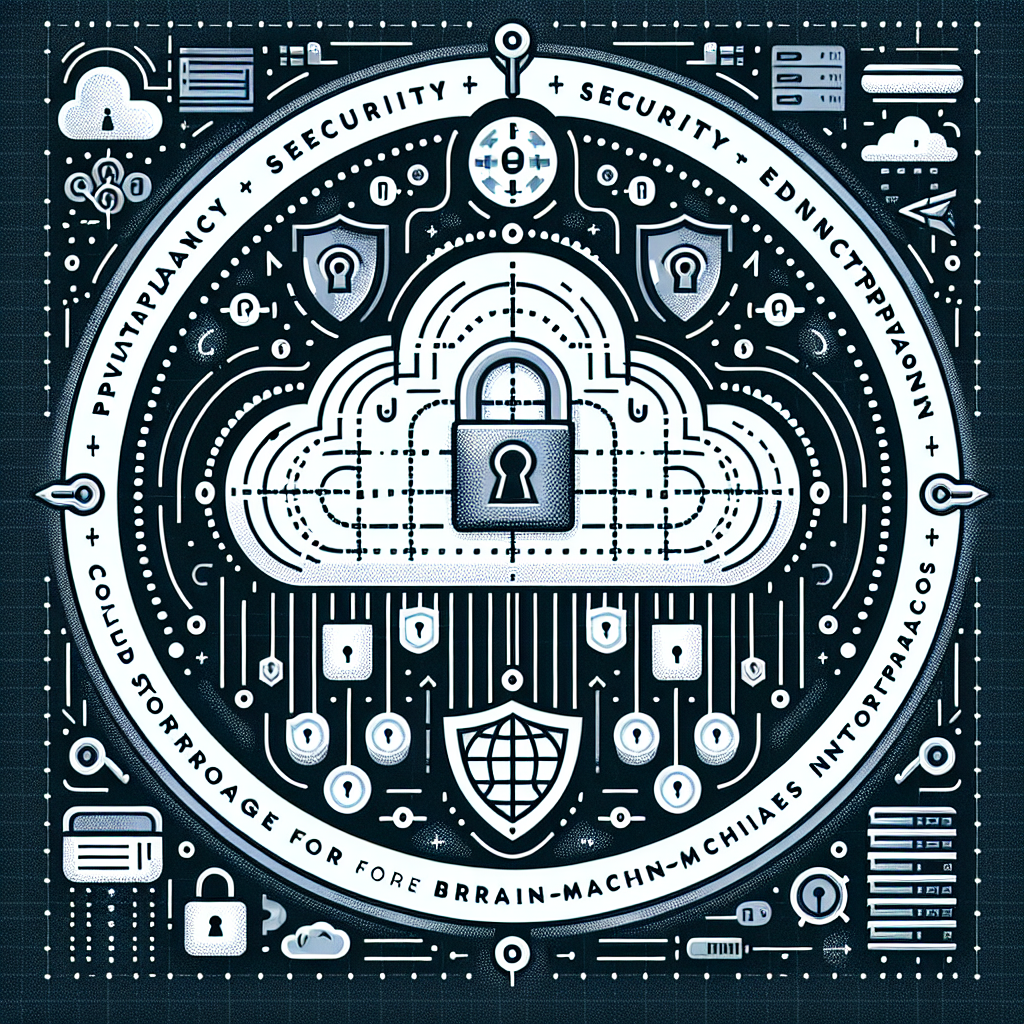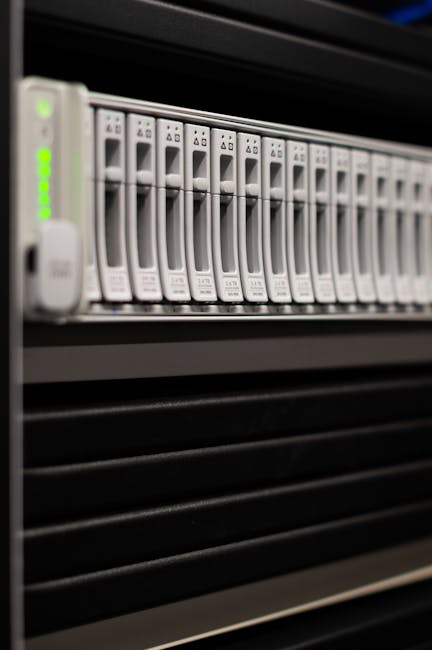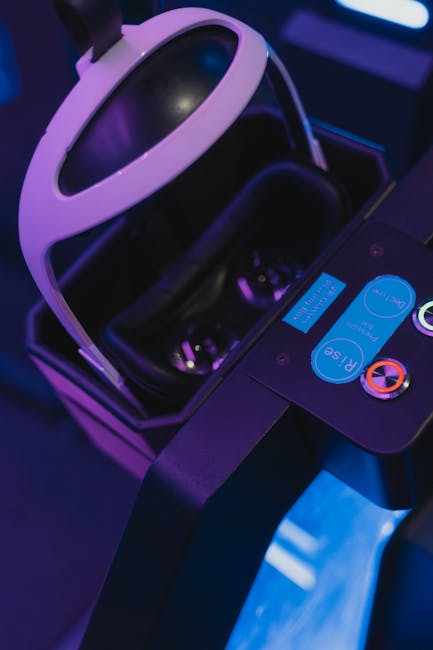Unlock encrypted content
Please enter your SSCE key to initiate on-the-fly decryption.
Decryption key: (Click cancel if you don't have the key)
Copied link to clipboard.
This feature is unavailable for free accounts. Upgrade now and enjoy all Premium benefits.
Go Premium!
This feature is unavailable for free accounts. Upgrade now and enjoy all Premium benefits.
Go Premium!
Please open this page in browser ( Google Chrome or Safari ) to use this feature.
Open In Browser
Self-Driving Cars: Revolutionizing Transportation with Scalable Cloud Storage Architecture
Random related video for this blog.
Copied share link to clipboard.
These autonomous vehicles have the potential to revolutionize the way we travel, making our roads safer and more efficient. But behind the scenes, self-driving cars rely on a complex infrastructure that includes scalable cloud storage architecture. In this article, we will explore how cloud storage plays a crucial role in the development and operation of self-driving cars, as well as its impact on automation, job displacement, and the overall user experience.
Scalable Cloud Storage Architecture for Self-Driving Cars
Self-driving cars generate an enormous amount of data every second. From sensor readings to high-definition video feeds, these vehicles require a robust storage infrastructure to handle the massive influx of information. Scalable cloud storage architecture provides the necessary flexibility and scalability to accommodate the storage needs of self-driving cars. Cloud storage allows for the seamless integration of multiple data sources, including GPS data, sensor data, and real-time traffic information. By leveraging a distributed storage system, self-driving cars can access and analyze this data in real-time, enabling them to make split-second decisions on the road. Moreover, cloud storage architecture ensures data redundancy and fault tolerance, minimizing the risk of data loss and system failures.Cloud Storage Pricing and Accessibility
One of the key advantages of using cloud storage for self-driving cars is its cost-effectiveness. Cloud storage providers, such as FileLu, offer flexible pricing plans that cater to the varying storage needs of self-driving car manufacturers and operators. These plans range from affordable monthly subscriptions to free plans with generous storage capacities. Cloud storage also eliminates the need for expensive on-premises infrastructure, reducing the upfront costs associated with building and maintaining a data storage system. Moreover, cloud storage providers offer easy-to-use downloading tools, allowing self-driving car manufacturers to quickly retrieve and analyze stored data for testing, debugging, and improvement purposes.Automation and Job Displacement
The rise of self-driving cars has raised concerns about job displacement in the transportation industry. As automation becomes more prevalent, certain jobs, such as taxi and truck drivers, may be at risk. However, the adoption of self-driving cars also presents new opportunities for job creation and skill development. While some jobs may be displaced, new roles will emerge to support the development, operation, and maintenance of self-driving cars. These roles include data analysts, software engineers, cybersecurity experts, and technicians specializing in autonomous vehicle technology. Additionally, the growth of cloud storage architecture in the self-driving car industry will create a demand for professionals with expertise in cloud computing and data management.
Easy-to-Use Downloading Tools and Global File Sharing
Cloud storage providers like FileLu offer easy-to-use downloading tools that enable self-driving car manufacturers to seamlessly retrieve and analyze stored data. These tools allow for efficient data transfer, ensuring that valuable insights can be quickly extracted from the vast amounts of data generated by self-driving cars. Moreover, cloud storage facilitates global file sharing. With just a few clicks, self-driving car manufacturers can securely share files with anyone around the world, enabling collaboration and knowledge exchange. This global accessibility enhances the speed of innovation and allows for the collective advancement of self-driving car technology.Video Storage and Analytics
Video storage is a critical component of self-driving car technology. High-definition video feeds captured by onboard cameras provide valuable visual data that helps autonomous vehicles navigate and make informed decisions. Cloud storage architecture offers the capacity and performance required to store and process these video streams. By leveraging cloud storage, self-driving cars can offload the processing of video data to powerful servers in the cloud. This allows for real-time video analytics, such as object detection, lane tracking, and pedestrian recognition, which are essential for the safe and efficient operation of autonomous vehicles. Cloud storage also enables the seamless integration of machine learning algorithms, allowing self-driving cars to continuously improve their perception and decision-making capabilities.Blockchain Technology and Quantum Encryption for Data Security
Data security is of utmost importance in the self-driving car industry. The sensitive nature of the data collected by autonomous vehicles requires robust security measures to protect against unauthorized access and tampering. Blockchain technology and quantum encryption offer promising solutions to address these security concerns. Blockchain technology provides a decentralized and immutable ledger that ensures the integrity and transparency of self-driving car data. By leveraging blockchain, self-driving car manufacturers can create a secure and tamper-proof record of every data point collected by their vehicles. This not only enhances data security but also enables auditable and accountable data sharing among stakeholders. Quantum encryption, on the other hand, leverages the principles of quantum mechanics to provide unbreakable encryption for self-driving car data. Quantum encryption algorithms use the fundamental properties of quantum particles to ensure that data remains secure even against powerful computational attacks. By implementing quantum encryption, self-driving cars can protect their data from unauthorized access and maintain the privacy of their users.Wearable Devices and the Future of Self-Driving Cars
Wearable devices have the potential to enhance the user experience and safety features of self-driving cars. By integrating wearable devices with autonomous vehicles, users can receive real-time updates, notifications, and alerts directly on their smartwatches or other wearable gadgets. For example, wearable devices can monitor the driver's health and alert the autonomous vehicle if the driver's vital signs indicate a medical emergency. This can prompt the vehicle to take appropriate actions, such as pulling over and contacting emergency services. Wearable devices can also provide haptic feedback or visual cues to assist visually impaired passengers in navigating and interacting with self-driving cars. In conclusion, self-driving cars are poised to transform transportation as we know it. The development and operation of these autonomous vehicles rely on scalable cloud storage architecture, which enables the efficient storage, processing, and analysis of vast amounts of data. Cloud storage also offers cost-effective pricing plans, easy-to-use downloading tools, and global file sharing capabilities. While concerns about job displacement exist, the adoption of self-driving cars will create new opportunities for skilled professionals. Additionally, video storage, blockchain technology, quantum encryption, and wearable devices play crucial roles in ensuring data security and enhancing the user experience. As self-driving car technology continues to evolve, cloud storage architecture will remain a fundamental pillar in driving innovation and revolutionizing transportation.Frequently Asked Questions (FAQs)
Question: How does cloud storage architecture benefit self-driving cars? Answer:
Cloud storage architecture provides the flexibility and scalability needed to handle the massive amount of data generated by self-driving cars. It also offers cost-effective pricing plans, easy-to-use downloading tools, and global file sharing capabilities.
Question: What are the security measures implemented in self-driving car data storage? Answer:
Blockchain technology ensures the integrity and transparency of self-driving car data, while quantum encryption provides unbreakable encryption to protect against unauthorized access.
Question: How do wearable devices enhance the user experience of self-driving cars? Answer:
Wearable devices can provide real-time updates, notifications, and alerts to users, monitor their health, and assist visually impaired passengers in navigating and interacting with self-driving cars.
By Amelia Isabella
Email: [email protected]
Related
Cloud Storage Solutions: Enhancing Business Efficiency with Advanced Metadata Management...
October 17, 2024
Read More
Exploring the Intersection of Blockchain Technology and Secure File Sharing...
October 17, 2024
Read More
File Streaming: Revolutionizing File Management with Blockchain Technology and Biometric...
July 25, 2023
Read More
Popular
Revolutionizing Data Management: Innovations in Storage, Security, and Sustainable Technology.
September 24, 2025
Read More
The Future of Technology: Data Privacy, Self-Driving Cars, and Hybrid...
September 21, 2025
Read More
Exploring the Future of Data Management: Security, Efficiency, and Cognitive...
September 28, 2025
Read More
The Future of Data Storage: Exploring Advanced Encryption, Mobile Integration,...
October 5, 2025
Read More
Latest
The Future of Data Storage: Exploring Advanced Encryption, Mobile Integration,...
October 5, 2025
Read More
Exploring the Future of Data Management: Security, Efficiency, and Cognitive...
September 28, 2025
Read More
Revolutionizing Data Management: Innovations in Storage, Security, and Sustainable Technology.
September 24, 2025
Read More
The Future of Technology: Data Privacy, Self-Driving Cars, and Hybrid...
September 21, 2025
Read More
The Future of Cloud Storage: Innovations in Scalable Storage, Synchronization,...
September 10, 2025
Read More
The Future of File Storage: Exploring Cryonics, Transhumanism, and Advanced...
September 7, 2025
Read More
Innovations in Cloud Storage and Data Management: Navigating the Future...
September 3, 2025
Read More
The Future of Technology: Integrating Virtual Reality, Autonomous Driving, and...
August 27, 2025
Read More
The Future of File Management: Innovations in Data Sovereignty, Security,...
August 24, 2025
Read More
The Future of Data Management: Exploring Innovations in Robotics, Genetic...
August 20, 2025
Read More
The Future of Data Management: Exploring Efficient Technologies in File...
August 13, 2025
Read More
The Future of Technology: Exploring Innovations in Artificial Intelligence, Data...
August 10, 2025
Read More
The Future of File Management: Exploring Cloud-Based Backup, Video Storage,...
August 6, 2025
Read More























